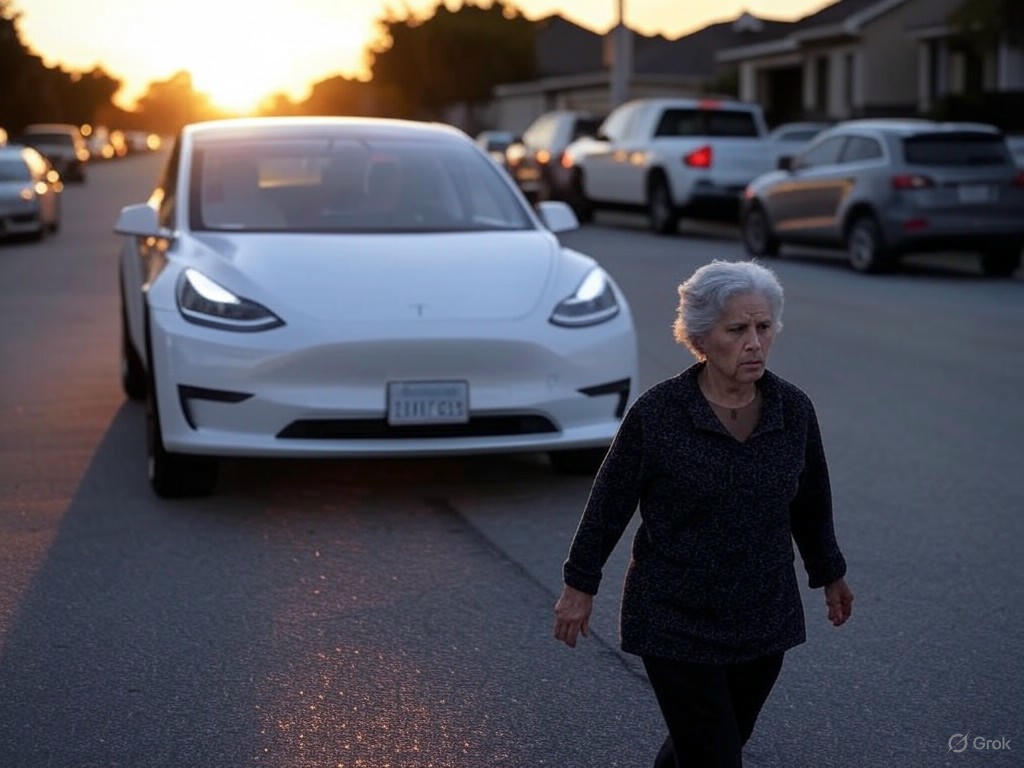Tragic Collision: Self-Driving Tesla Incident Raises Safety Alarms
In a chilling reminder of the risks tied to autonomous technology, a recent video has surfaced showing a self-driving Tesla involved in a devastating accident. The footage captures the vehicle, operating in its ‘full self-driving’ mode, striking a 71-year-old woman who had paused to help at the scene of a prior collision. This heartbreaking event, which unfolded under broad daylight, has sparked renewed debates over the readiness of self-driving systems for public roads. The incident reportedly occurred when the Tesla’s sensors appeared to misinterpret environmental conditions, possibly due to glare from the sun, leading to a catastrophic failure in detecting the pedestrian.
The video, which has since gone viral, shows the elderly woman standing near the roadside, likely unaware of the approaching danger. Witnesses described the scene as surreal, with the car accelerating without any apparent attempt to slow down or swerve. Emergency responders arrived promptly, but the impact of such a tragedy resonates far beyond the immediate aftermath. This incident is not an isolated one; it adds to a growing list of concerns surrounding autonomous vehicles and their interaction with unpredictable real-world scenarios. Critics argue that while the technology promises convenience and reduced human error, it still struggles with nuanced situations that require split-second human judgment.
Automotive experts are now dissecting the event to understand what went wrong. Preliminary reports suggest that the Tesla’s onboard systems may have been overwhelmed by external factors, such as intense sunlight interfering with camera and sensor accuracy. This raises critical questions about the limitations of current self-driving algorithms and whether they can reliably handle edge cases. The manufacturer has issued a statement expressing deep regret over the incident and promising a thorough investigation in collaboration with authorities. However, for many, this response feels like a familiar refrain, echoing past assurances after similar accidents involving autonomous vehicles.
Public trust in self-driving technology, once heralded as the future of transportation, is now at a crossroads. Advocacy groups are calling for stricter regulations and more rigorous testing before such vehicles are allowed to operate without human oversight. Meanwhile, the victim’s family and community mourn a preventable loss, urging for accountability and improved safety measures. The incident serves as a stark warning that innovation must not outpace responsibility. As companies race to dominate the autonomous vehicle market, the balance between technological advancement and human safety remains precarious.
As discussions intensify, this tragedy could become a turning point for the industry. It underscores the urgent need for transparency in how these systems are developed and deployed. While self-driving cars hold immense potential to transform mobility, incidents like this remind us that perfection is far from guaranteed. The road ahead demands not just smarter machines, but a commitment to prioritizing lives over expediency. Only time will tell if this painful lesson will drive meaningful change in the pursuit of a safer autonomous future.


